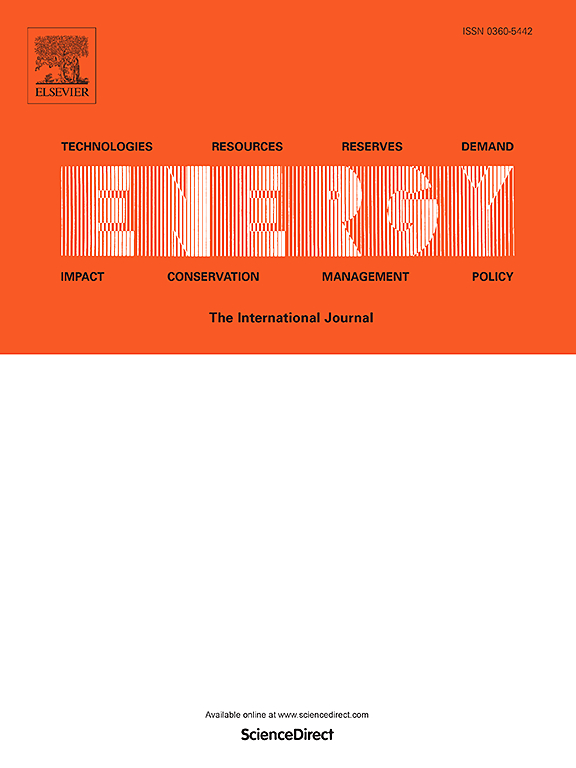商用卡车全维PEMFC叠垛冲击滑移等效力学模型研究及试验验证
IF 9
1区 工程技术
Q1 ENERGY & FUELS
引用次数: 0
摘要
氢燃料电池和质子交换膜燃料电池在商用重型卡车上得到了很好的应用,以实现可持续能源转换,减少柴油的需求,但大型全尺寸燃料电池堆的电池数量可能达到600 - 700个。由于大型全维燃料电池堆的建模不可避免的困难,本研究的目的是提出一种有效的等效模型来预测接触压力和法向力。采用代表性体积元(RVE)均匀化方法简化网格,避免了收敛困难。为了验证该等效模型,利用压敏膜进行了接触压力分布测量实验。等效模型与实验结果吻合较好,最大误差在8%以内。最后,基于该等效模型,建立了100个单体的大型全维燃料电池堆的碰撞动力学行为,给出了整个燃料电池堆的最大相对滑移和最大绝对滑移的计算结果。本研究为商用车上大型全维燃料电池堆及冲击滑移的研究提供了一种有效的建模与仿真方法。本文章由计算机程序翻译,如有差异,请以英文原文为准。
Study of an equivalent mechanical model and experimental validation to predict the impact slippage of a full-dimensional PEMFC stack for commercial trucks
As hydrogen and Proton Exchange Membrane Fuel Cells are well applied in commercial heavy trucks for sustainable energy conversation to decrease diesel requirement, however the number of cells in a large full-dimensional fuel cell stack can reach between 600 and 700 cells. Due to the inevitable difficulties of modeling of a large full-dimensional fuel cell stack, the purpose of this study is to propose an effective equivalent modeling to predict the contact pressure and the normal force. Representative volume element (RVE) homogenization method is implemented to simplify the mesh and to avoid the convergence difficulties. To validate this equivalent model, experiments with pressure-sensitive film to measure the contact pressure distribution are carried out. The equivalent model has a great agreement with the experimental results and the maximum error is within 8 %. Finally, based on this equivalent model, the impact dynamic behaviors of a large full-dimensional fuel cell stack with 100 cells are established and the results of the maximum relative slippage and maximum absolute slippage of the whole fuel cell stack are presented. This study offers an effective and efficient modeling and simulation method to study the large full-dimensional fuel cell stack and even impact slippage applied on the commercial truck.
求助全文
通过发布文献求助,成功后即可免费获取论文全文。
去求助
来源期刊

Energy
工程技术-能源与燃料
CiteScore
15.30
自引率
14.40%
发文量
0
审稿时长
14.2 weeks
期刊介绍:
Energy is a multidisciplinary, international journal that publishes research and analysis in the field of energy engineering. Our aim is to become a leading peer-reviewed platform and a trusted source of information for energy-related topics.
The journal covers a range of areas including mechanical engineering, thermal sciences, and energy analysis. We are particularly interested in research on energy modelling, prediction, integrated energy systems, planning, and management.
Additionally, we welcome papers on energy conservation, efficiency, biomass and bioenergy, renewable energy, electricity supply and demand, energy storage, buildings, and economic and policy issues. These topics should align with our broader multidisciplinary focus.
 求助内容:
求助内容: 应助结果提醒方式:
应助结果提醒方式:


